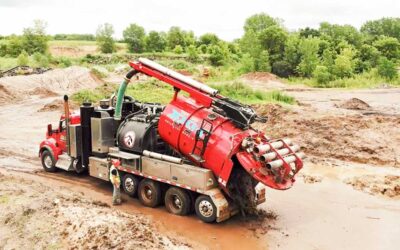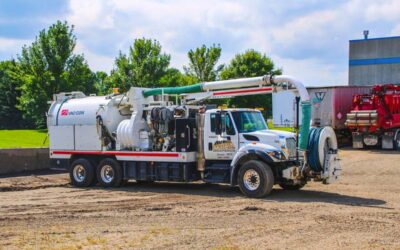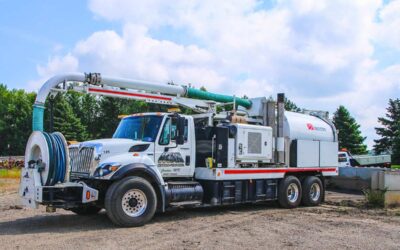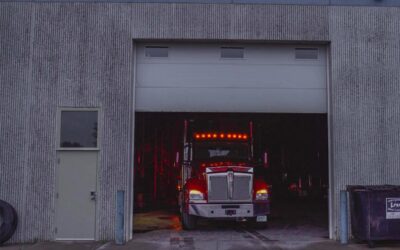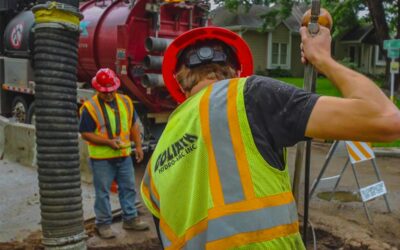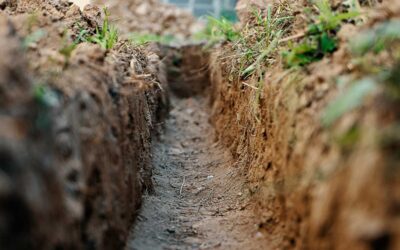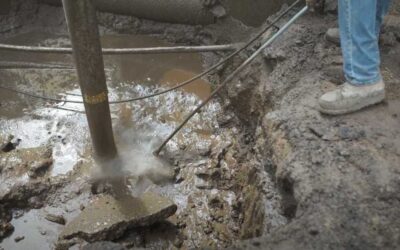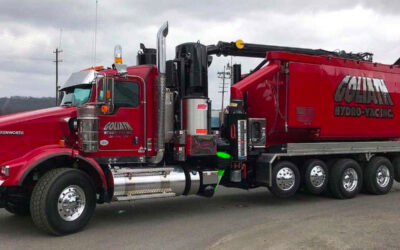What is Hydro Jetting?
What is Hydro Jetting?
The excavation industry has seen a plethora of changes in the past few decades, with technology and innovation paving the way for more efficient and less invasive techniques. A key player in this wave of change is hydro jetting, a method that has transformed the traditional approach to excavation by providing a safer, cleaner, and more precise alternative.
Hydro jetting, a process that uses high-pressure water to break down and displace material, is rapidly becoming a preferred method for excavation across various industries. Whether it’s uncovering underground utilities without damage or removing soil in a controlled manner for construction projects, hydro jetting’s versatility, efficiency, and minimal environmental impact has positioned it at the forefront of excavation technology.
In this article, we take an in-depth look at the role of hydro jetting in the excavation industry, exploring its benefits over traditional digging methods and its wide-ranging applications
How Does Hydro Jetting Work?
Hydro jetting is a simple concept that leverages a straightforward principle: the power of water under high pressure. Let’s break down how this technique works and understand how this powerful tool works:
Basic Principle: The fundamental principle of hydro jetting is the use of water under high pressure. By forcing water at high pressure through a nozzle, a concentrated stream is created that can dislodge debris, break up blockages, or even excavate soil. The pressure and flow rate can be adjusted according to the specific task at hand, providing a high level of control and precision.
Equipment Involved: The primary equipment used in hydro jetting includes a water source, a high-pressure hose, a nozzle, and a water pump capable of generating substantial pressure.
- Water Source: The water source can be any supply of clean water, such as a standard municipal water line.
- High-Pressure Pump: The high-pressure pump is the heart of the system. It is responsible for elevating the water pressure to the required levels, typically ranging from 1,500 to 60,000 pounds per square inch (psi) or more depending on the application.
- High-Pressure Hose: The high-pressure hose is a robust conduit designed to withstand the high pressures involved. It transports the water from the pump to the nozzle.
- Specialized Nozzle: The nozzle is a critical component of the system. It is designed to direct the water in a specific pattern at high speed. Various nozzle designs exist for different applications, such as piercing blockages, cutting through roots, or dislodging debris.
Process: The process of hydro jetting starts by inserting the nozzle attached to the high-pressure hose into the pipe, drain, or area to be cleaned or excavated. The high-pressure pump then drives water through the hose, forcing it out through the nozzle. The force of the water accomplishes the desired task, whether it’s breaking up a clog in a pipe, dislodging debris, or loosening soil for excavation.

The Benefits of Hydro Jetting
The versatility and efficiency of hydro jetting make it a valuable tool in the excavation industry. Listed below are a few key benefits of hydro jetting as an excavation method:
Precision and Control: Hydro jetting offers an exceptional level of precision in excavation, allowing for unmatched accuracy in the removal of soil and other materials. This control makes it an ideal tool for sensitive projects where traditional excavation methods might pose risks to buried utilities or nearby structures.
Efficiency and Speed: Because of the power and force of the high-pressure water, hydro jetting can often displace soil and other materials more quickly than traditional excavation methods. This also means fewer logistical challenges, as the compact nature of hydro jetting equipment simplifies transportation to and from the worksite. The simplicity of hydro jetting makes it an efficient solution for projects with tight timelines or where rapid progress is critical.
Environmental Consideration: Hydro jetting minimizes surface disruption compared to traditional methods, reducing the environmental footprint of excavation projects. The technique allows for targeted excavation that preserves surrounding soil and reduces the need for land rehabilitation post-project. Furthermore, as it uses water, an abundant and naturally occurring resource, it poses minimal environmental hazards compared to chemical-based excavation methods.
Reduced Labor and Equipment Needs: The hydro jetting process requires fewer personnel and less heavy machinery compared to traditional excavation methods, reducing labor costs and potential risks associated with operating large equipment. Plus, its effectiveness in clearing blockages or cleaning surfaces reduces the need for repeated treatments, making it a cost-effective solution in the long run.
Safety: By minimizing the need for physical labor and heavy machinery operation, hydro jetting also enhances the safety profile of excavation projects. The technique reduces the risk of injuries associated with manual digging or machinery accidents, making it a safer choice for construction teams.
Versatility: Whether it’s removing compacted soil, clay, or rock, hydro jetting proves its mettle in tackling diverse ground conditions. Its versatility extends to various applications, from utility exposure, trench digging, to even tunneling.
Long-term Maintenance: By enabling a cleaner, more thorough excavation, hydro jetting reduces the risk of subsequent complications like soil collapse or shifting. The ability to remove all unwanted material without residual debris helps ensure the long-term stability and safety of the excavated area.
How is Hydro Jetting Used?
The excavation industry has found an efficient and reliable partner in hydro jetting. By employing the power of high-pressure water streams, hydro jetting provides excavation methods that are as precise as they are versatile. Here are the key applications of hydro jetting in excavation:
Hydro Excavation: This method uses high-pressure water to break down the soil, which is then removed, which is then removed with a vacuum. The precision and control offered by hydro jetting make it an ideal tool for sensitive excavation tasks, such as locating and exposing underground utilities without causing damage.
Cold Weather Excavation: In colder climates where the ground can freeze, hydro jetting provides an effective excavation solution. With the use of heated water, it can break up the frozen ground without the need for mechanical digging or the use of chemicals.
Remote Excavation: In areas that are hard to reach or hazardous, hydro jetting can be used for remote excavation. By using long hoses and remote control equipment, it’s possible to excavate without putting personnel in potentially risky situations.
Potholing or Daylighting: Hydro jetting is extensively used for potholing or daylighting, which involves uncovering utilities to confirm their depth and location. This method provides a safer and more precise alternative to traditional mechanical excavation methods, reducing the risk of utility strikes that can lead to costly repairs and project delays.
Tunneling: In certain scenarios, hydro jetting is used for tunneling purposes, where a small, controlled pathway under an existing structure (like roads or buildings) is needed. This could be useful in scenarios such as laying new pipelines or cables without disturbing the surface structure.
Slot Trenching: In the installation of cables, lines, or pipes, a technique called slot trenching is often used. Hydro jetting allows for accurate, narrow trenches to be dug with minimal disruption to the surrounding area.

Apart from excavation, hydro jetting has emerged as a game-changing solution across several industries and applications. Let’s explore some of the other key uses of this dynamic technique:
Residential and Commercial Plumbing: Hydro jetting is an excellent solution for clearing clogs and obstructions in residential and commercial drainage systems. The high-pressure water can cut through the toughest blockages, including grease, scale, tree roots, and other debris, while simultaneously flushing them out of the system. Beyond just resolving clogs, it also provides a comprehensive pipe cleaning, removing accumulated grime from pipe walls and reducing the likelihood of future blockages.
Sewer and Septic Systems: For larger scale infrastructure like sewer and septic systems, hydro jetting provides a robust solution for maintenance and cleaning. Its ability to break down and flush out stubborn blockages can help prevent costly damage and disruptions to these critical systems.
Industrial Cleaning: Hydro jetting is also frequently used for industrial cleaning tasks, such as the removal of surface layers, paint, rust, or other coatings from metal structures or concrete surfaces. Its precision and power make it ideal for refurbishing or preparing surfaces for new coatings, ensuring a clean and smooth finish.
Concrete Demolition: Hydro jetting, particularly with ultra-high pressures, can be employed for concrete demolition. It offers a quieter, less disruptive alternative to traditional methods, reducing dust and debris production.
Debris Removal and Site Clean-Up: After the completion of a project, hydro jetting can be used for site clean-up and debris removal. It can efficiently wash away unwanted residue or material, ensuring the site is clean and prepared for subsequent phases of the project.
Conclusion – What is Hydro Jetting?
In an era where precision, efficiency, and environmental consciousness are crucial, hydro jetting emerges as a valuable tool in the excavation industry. By harnessing the raw power of high-pressure water, this innovative technique transforms the way we approach excavation tasks, from simple soil displacement to complex utility exposure.
Goliath Hydrovac Inc. has been in the excavation industry for over 20 years. We are a trusted provider of hydrovac services throughout the midwest. Goliath Hydrovac Inc. is committed to providing exceptional excavation services tailored to your specific needs.
Contact us at 612-727-3444 today to learn more about how Goliath’s hydro jetting services can benefit your operation.
RELATED POSTS
Benefits of Industrial Cleaning
Industrial Cleaning Benefits Keeping a clean and secure environment goes beyond mere appearance; it's a vital...
What are the Key Components of Industrial Cleaning
Key Components of Industrial Cleaning Industrial cleaning refers to the specialized process of cleaning...
The Basics of Industrial Cleaning
The Basics of Industrial Cleaning Industrial cleaning is essential for the smooth and efficient operation of...
What is Industrial Cleaning
What is Industrial Cleaning? The importance of maintaining clean and sanitary manufacturing facilities cannot...
Trenching Safety
Trenching Safety Trenching is the process of digging deep and narrow excavations in the ground. The primary...
Types of Trench Excavation
Types of Trench Excavation Trenches are an essential aspect of excavation and construction projects, serving...
What is Trenching?
What is Trenching? Imagine for a moment the complex web of utilities that run beneath the surfaces of our...
Vacuum Excavator for Horizontal Drilling
Vacuum Excavation for Horizontal & Vertical Drilling Picture this: a drilling technique that doesn't rely...
Hydro Excavation Safety Tips and Procedures
Hydro Excavation Safety Tips Hydro excavation, a cutting-edge method of digging, harnesses the power of water...
Hydrovac Truck Winter Maintenance Tips: Keeping Your Fleet Ready for Cold Weather
Hydrovac Truck Winter Maintenance Tips Hydro-excavation trucks, also known as hydrovac trucks, utilize...

